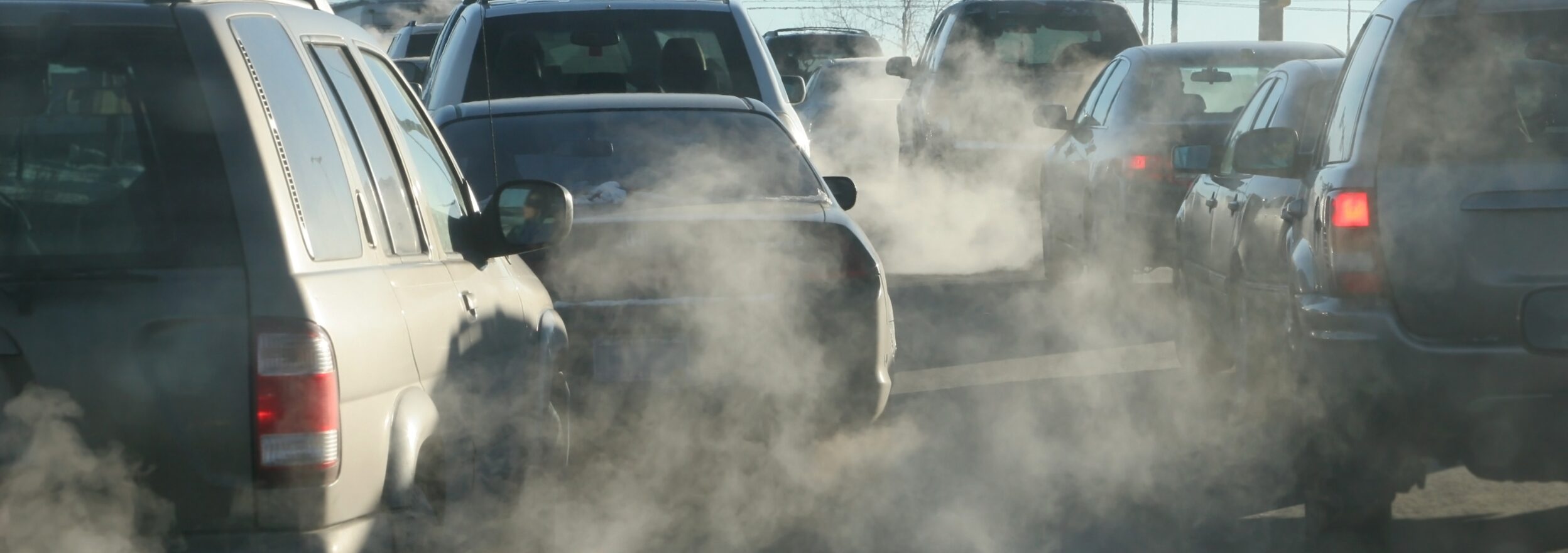
| The Clean Air Act (CAA) is a federal law designed to regulate air pollution and protect public health and the environment from harmful emissions. The CAA gives the EPA authority to set national air quality standards, limit the emission of pollutants from both stationary sources (like factories) and mobile sources (like vehicles), and enforce compliance through supervision and penalties.
The CAA addresses issues such as smog, acid rain, and hazardous air pollutants, making it a cornerstone of U.S. environmental law to reduce air pollution and ensure cleaner air across the country. In 2021, under the long-standing authority given by the CAA, the EPA issued its latest rule regulating emissions standards for new light-duty vehicles (passenger cars and trucks). Like its predecessors, the rule encourages the adoption of zero-emission technologies, like electric vehicles, by using “fleetwide average standards” to set emissions limits. Instead of requiring each vehicle to meet a specific emissions limit, the regulation allows manufacturers to make a mix of vehicles in a given year, some with higher emissions and some with lower (or zero) emissions, as long as the overall average across all the vehicles in their fleet meets the required standard. For example, if the EPA sets a fleetwide emissions standard for cars, a manufacturer can balance high-emission vehicles with low-emission or zero-emission vehicles like electric cars to comply with the regulation. Special interests have targeted the EPA’s standard, challenging its authority to ensure clean air and limit harmful emissions. They have also challenged related regulatory actions of the EPA and the National Highway Traffic Safety Administration (NHTSA), also designed to reduce vehicle pollution and improve fuel economy.
The State of Texas and other special interests sued the EPA, arguing that it exceeded its authority in adopting this critical regulation. The Union of Concerned Scientists – represented by Democracy Forward – as part of a coalition of non-governmental organizations and 23 states and cities, intervened to defend the rule. On March 21, 2023, we jointly submitted our brief to the Court of Appeals for the District of Columbia Circuit, supporting the EPA’s authority to issue the rule. The petitioners in this case argue that the EPA’s interpretation of its authority, particularly regarding the inclusion of zero-emission vehicles in the fleet-wide averaging standards, raises a major question–a legal argument that the far right uses to challenge and provide a basis for judges to reject any program or government action they disagree with. However, our supplementary brief explains that the doctrine is inapplicable here because the EPA’s authority to regulate greenhouse gasses has been long established and is not a novel or expansive claim. On August 19, 2024, the nongovernmental organizations filed a supplementary brief explaining that the U.S. Supreme Court’s recent decision in Loper Bright Enterprises v. Raimondo supports our position in this case and the EPA’s authority to issue the rule. The brief argues that the EPA has long had the authority to adopt such standards under the Clean Air Act. It emphasizes that fleetwide standards, including zero-emission vehicles, have been under the EPA’s regulations for decades.
The Union of Concerned Scientists – represented by Democracy Forward – as part of a coalition of non-governmental organizations, is defending NHTSA’s new rule, “Corporate Average Fuel Economy Standards for Model Years 2024-2026 Passenger Cars and Light Trucks,” which was implemented in May 2022 and strengthens vehicle fuel-economy standards, from challenges by various states and fuel-industry groups. The coalition, which intervened in the case to defend the rule, submitted a brief that highlights the importance of regulating fuel economy standards to maintain air quality limits and defends NHTSA’s interpretation and execution of the Energy Policy and Conservation Act (EPCA).
The state of Ohio is challenging the EPA’s decision to reinstate California’s Clean Air Act waiver, which allows the state to set higher air quality standards and emissions limits. We represented the Union of Concerned Scientists, who, as part of a coalition of public interest organizations, intervened in the case to defend the EPA’s action. We submitted a brief highlighting the importance of the EPA’s 2022 decision to restore California’s waiver, explaining that the CAA authorizes EPA to permit California to set its own vehicle emission standards–as it has done for decades– to combat greenhouse gas emissions and local air quality challenges. On April 9, 2024, the court rejected the petitioners’ challenges, upholding the EPA’s waiver and California’s emissions standards. The petitioners are now asking the Supreme Court to take up the case. |